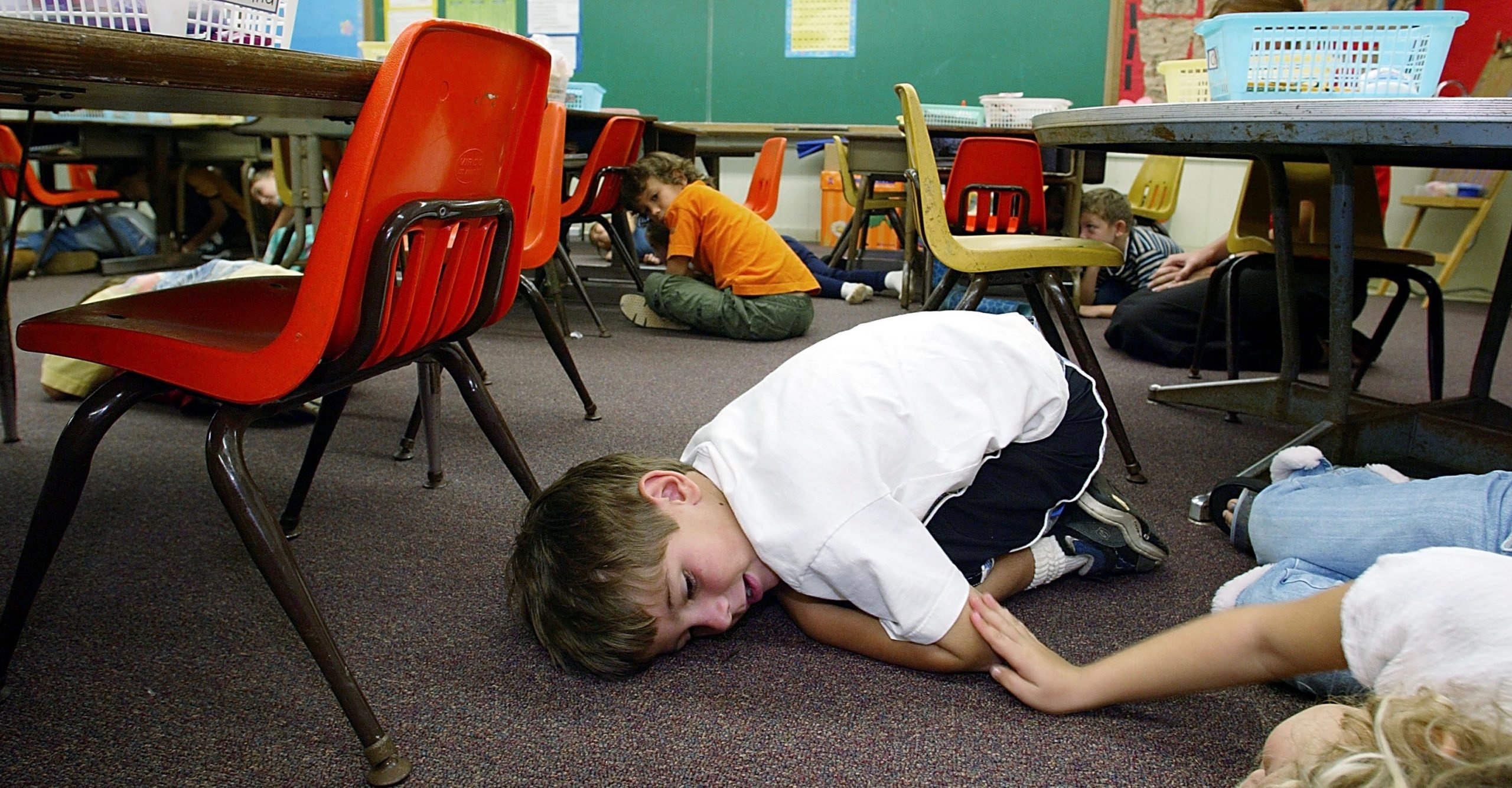Florida's Response To School Shootings: Lockdown Effectiveness Across Generations

Table of Contents
Lockdown Procedures in Florida Schools: A Statewide Overview
Florida's current statewide lockdown protocols generally involve immediate shelter-in-place instructions upon a credible threat. Schools are expected to secure all entrances, lock doors, turn off lights, and ensure students and staff remain quiet and out of sight. However, variations exist across the state's 67 school districts. Some districts have implemented more sophisticated security systems, while others rely on simpler measures. This inconsistency highlights a need for standardization.
- Specific steps involved in a lockdown drill: Drills typically include announcements, classroom barricading procedures, and communication checks with administrators.
- Communication protocols: Protocols involve established lines of communication between schools, law enforcement (often including SWAT teams), and parents via phone calls, text alerts, and social media. However, communication breakdowns during actual events have been reported.
- Training provided: Staff and students receive varying degrees of active shooter training and lockdown drill practice. The frequency and quality of this training differ significantly across districts.
- Legal framework: Florida statutes mandate certain safety measures, including lockdown drills and the development of school safety plans. However, the specifics of these plans and their enforcement remain largely decentralized.
Lockdown Effectiveness: Elementary vs. Secondary Schools
The effectiveness of lockdowns varies significantly between elementary and secondary schools. Younger children in elementary schools often require more direct supervision and assistance during a lockdown, posing challenges for teachers who may need to manage larger class sizes. Adolescents in secondary schools present different challenges, potentially exhibiting more complex behavioral responses to fear and confinement.
- Challenges with younger children: Managing fear, anxiety, and the potential for panic among younger children during prolonged lockdowns is a major concern. Clear, age-appropriate communication is critical.
- Managing adolescents: Adolescents might attempt to disobey instructions or react unpredictably. Clear communication strategies and de-escalation techniques are necessary for effective management.
- Successful and unsuccessful implementations: Case studies from Florida schools reveal that effective lockdowns involve clear, concise communication, rapid implementation, and well-trained staff. Unsuccessful lockdowns often involve communication breakdowns, delayed responses, or inadequate training.
- Data on lockdown duration: Data on the duration of lockdowns and the associated psychological impact on students and staff are crucial for evaluating the effectiveness of procedures and informing future improvements. This data collection remains inconsistent across districts.
Technological Advancements and Lockdown Protocols
Technology plays an increasingly vital role in enhancing school security and lockdown procedures in Florida. Security systems like advanced access control, surveillance cameras, and panic buttons can improve response times and communication. Communication apps enable rapid alerts and updates.
- Successful technology implementation: Some Florida schools have successfully integrated security systems that instantly notify law enforcement during a crisis.
- Cost-effectiveness and accessibility: The cost of implementing sophisticated technologies varies widely, presenting accessibility challenges for schools with limited budgets.
- Limitations of technology: Technology can fail, and over-reliance on it can create a false sense of security. Comprehensive training and robust backup systems are vital.
- Integration into drills: Incorporating technology into lockdown drills improves training and familiarization with security systems.
Mental Health Impacts and Post-Lockdown Support
School shootings and lockdowns have profound psychological effects on students and staff, potentially leading to PTSD, anxiety, and depression. Access to timely and effective mental health services is paramount.
- Addressing trauma and anxiety: Evidence-based interventions, including trauma-focused cognitive behavioral therapy (TF-CBT) and other therapeutic approaches, are essential.
- Role of mental health professionals: Schools need adequate numbers of counselors and psychologists to provide immediate and ongoing support to affected individuals.
- Long-term support: Continued mental health support is crucial, not only in the immediate aftermath but also in the months and years following a traumatic event.
- Successful intervention programs: The success of post-trauma intervention programs hinges on early identification, prompt intervention, and ongoing support tailored to individual needs.
Future Improvements and Recommendations for Florida School Lockdowns
Improving Florida's approach to school safety and lockdowns necessitates a multifaceted approach. While current protocols offer a foundation, several areas need attention.
- Improved communication systems: Investing in reliable and redundant communication systems, including mass notification systems and encrypted channels, is critical.
- Enhanced training programs: Regular, comprehensive training programs for staff and students are needed to ensure consistent implementation of lockdown procedures.
- Better technology integration: Strategic integration of technology should enhance security without hindering teaching and learning.
- Increased mental health investment: Significant investments in mental health services are essential to provide adequate support to students and staff before, during, and after crises.
- Comprehensive safety plans: Schools need robust, regularly reviewed safety plans that incorporate input from students, staff, parents, law enforcement, and mental health professionals.
Conclusion:
This examination of Florida school shooting lockdowns reveals a complex interplay of procedures, technology, and human factors. While advancements have been made, significant opportunities for improvement remain, particularly in addressing the unique needs of different age groups and providing robust post-trauma support. Effective Florida school shooting lockdowns require a multifaceted approach involving continuous evaluation, technological innovation, and a deep commitment to the mental health and well-being of students and staff. Continued research and proactive measures are crucial to ensure safer schools for all. Let's work together to enhance Florida school safety and ensure the effectiveness of our lockdown procedures across all generations. Improving Florida school shooting response is a shared responsibility requiring ongoing commitment and collaboration.

Featured Posts
-
 Nekretnine U Inostranstvu Popularne Destinacije Medu Srbima
May 17, 2025
Nekretnine U Inostranstvu Popularne Destinacije Medu Srbima
May 17, 2025 -
 Reddit Back Online After System Outage Full Service Restored
May 17, 2025
Reddit Back Online After System Outage Full Service Restored
May 17, 2025 -
 Dont Miss Out Apple Tv For 3 3 Month Discount
May 17, 2025
Dont Miss Out Apple Tv For 3 3 Month Discount
May 17, 2025 -
 Acidente De Onibus Universitario Deixa Mortos E Feridos
May 17, 2025
Acidente De Onibus Universitario Deixa Mortos E Feridos
May 17, 2025 -
 The Doors Jim Morrison A New York Maintenance Man Fans Claim Investigated
May 17, 2025
The Doors Jim Morrison A New York Maintenance Man Fans Claim Investigated
May 17, 2025
